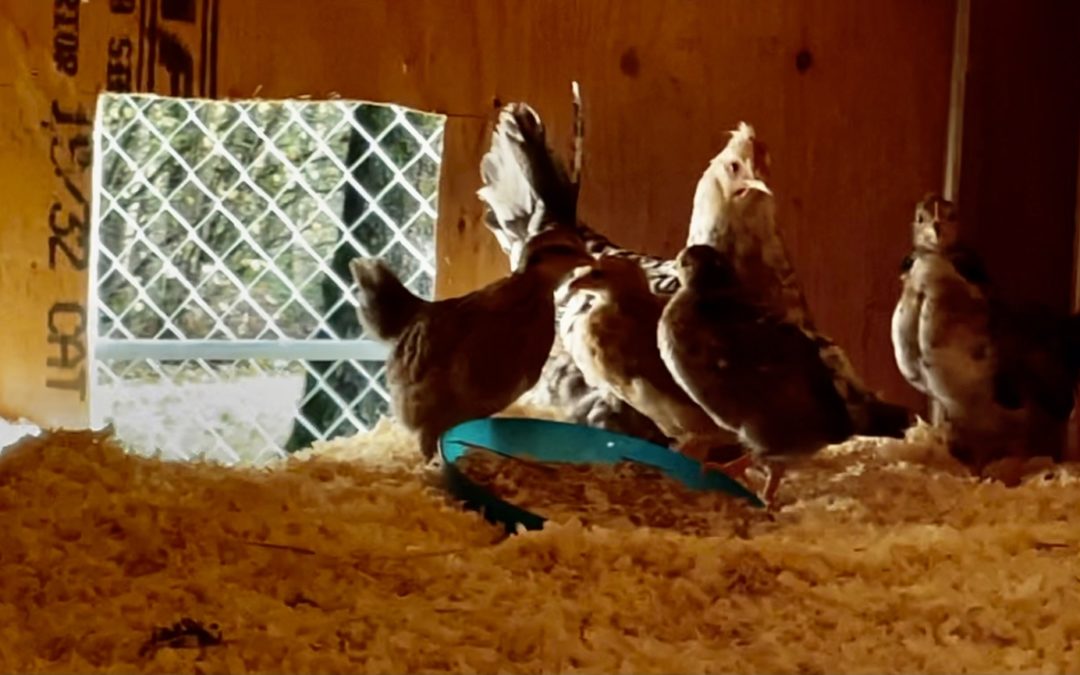Over Thanksgiving weekend, I received one hen and four 5-week-old chicks. We put them in the run (which has been secured to keep the chickens from flying out), and the chicks immediately escaped the run through the chain link fence. As we ran around the field trying to get the chicks back, I really considered giving up on this whole chicken mama thing. But with some patience, we were able to get all the chicks and the hen back in the coop. Then I added chicken wire to the chain link fencing.
It has been fun to actually see chickens living in my coop.
As my husband pointed out, this (1 day) is the longest any chicken has resided in my coop or run. Once they get settled in, we will add some more laying chickens and a rooster for safekeeping. According to my chicken coach, the one remaining chicken who hangs out with my neighbor’s horses and goats may return once she hears the cackle of the rooster.
I’ve really tried not to repeat any of the mistakes I made last time, so that I can finally enjoy having chickens and fresh eggs. And it has been helpful to review the advice from readers of my earlier posts, read more chicken books and seek out additional knowledge. While success with the chickens isn’t life or death for me, it is something that I would really like to accomplish.
Similarly, I know that many business owners would like to be successful in the ever-changing world of COVID —except in this case, it is life or death. Businesses are struggling to keep their employees safe and protect the customers while continuing to operate and be profitable. Many companies, especially manufacturers, have had to start and stop production when they have had COVID cases within the workforce. One local company has had to stop shipping product for at least one day every two weeks for the past two months. That is a lot of lost revenue and increased labor costs.
In order to stay on top of all the changes, businesses need to anticipate issues and take proactive steps in order to avoid shutdowns, production delays and customer shortages. But it is hard to be proactive when you feel you can’t do anything but react. If the leadership team is clear on the direction of the organization and the path to get there, though, they can prioritize the issues and take steps to resolve them.
If you feel that your organization has become more reactive and less proactive, you can take steps now to regain control. It may feel like you don’t have time, but if you don’t do something different, the reactive cycle will continue to repeat.
The great news is that I can introduce you to some tools that can help you put yourself back in the driver’s seat. Let’s talk today and I’ll help you regain control over your business.

